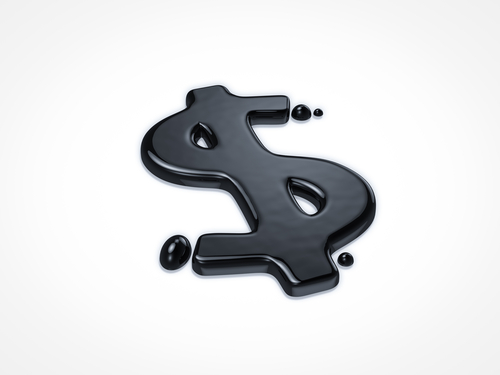Global Challenges are Mounting as Oil Continues to Slip

Please note that we are not authorised to provide any investment advice. The content on this page is for information purposes only.
The US dollar is trading within yesterday’s ranges against the major currencies. The Canadian dollar is the main exception. It is pushing lower still, with the greenback pushing a little beyond CAD1.1550. The main development today is the continued drop in oil prices.
The US dollar is trading within yesterday’s ranges against the major currencies. The Canadian dollar is the main exception. It is pushing lower still, with the greenback pushing a little beyond CAD1.1550. The main development today is the continued drop in oil prices.
The latest cause has been the cuts in demand forecast by OPEC and IEA. Generally softer than expected Chinese data, especially industrial output, which slowed to 7.2% in November from 7.7% in October, and reports indicating a key policy-making meeting resulted in a cut in the 2015 growth target to 7.0% from 7.5%, reinforced ideas that oil demand will slacken. In addition, reports suggest that China, which had been building strategic (oil) reserves as prices fell, has stopped.
Oil prices have fallen about 10% this week. Brent finished last week near $69.10 and is now around $63.25. WTI finished last week just below $66 and now is just above $59. The slowing of the Chinese economy coupled with increased output in the US (it reached a new high of 9.12 mln barrels a day in the week of December 5), and larger OPEC discounts maintained the downward pressure.
Assuming one was an oligopoly, this is precisely the rational-actor strategy: Allow the price to fall and push higher cost alternatives out of the market. We suggested that the channel for this might not simply be a drop in oil prices themselves, as powerful as that may be, but also through cutting the cheap funding, which was largely predicated on the purported value of the oil in the ground.
This precipitous decline in oil prices hits the global economy as deflationary forces still threaten large parts of the world economy. It has knocked down US 10-year yields. After the constructive employment report, US 10-year yields finished last week near 2.30%. Today they touched 2.11%. And this despite, continued robust data (see yesterday’s 0.7% rise in headline retail sales) and speculation that next week’s FOMC statement will delete or dilute the reference to “considerable period” as the next step towards preparing investors for a rate hike next year.
The decline in oil prices not only pushed down bond yields, but also spurred sharp losses in the equity markets and a setback in the US dollar. The yen is the strongest currency this week, recovering a little more than 2.5%. The New Zealand dollar is in second place, helped by a less dovish central bank. The euro is about 1.2% higher on the week after recording new cyclical lows on Monday. Sterling rose about 0.75% this week.
On the other side, the Norwegian krone was the worst performer, dropping 3%, mostly following the central bank’s unexpected 25 bp rate cut. The Canadian dollar lost about 1% this week as the market treated it like a petrol-currency. Weighed down by weak commodity prices, slowing of China, and bearish comments from RBA Governor Stevens, prevented the Australian dollar from sustained upticks over the course of the week, and is off around 0.5% on the week.
The main macro-economic news today has come from China. Real sector data, including retail sales, industrial output, and fixed asset investment were in line with expectations or touch softer. New yuan loans and aggregate social financing were stronger than expected. Some see an increase as a sign that Chinese officials are using moral suasion. However, the moral suasion could be in the form of the annual target, which Chinese financial institutions are still well short of achieving. In order to reach the CNY1.8 trillion target for 2014, yuan loans have to rise by almost CNY950 bln in December.
For the first time this week, the PBOC fixed the yuan lower, but the market selling pressure seen earlier this week appeared to abate. Expect the HSBC preliminary manufacturing PMI early Monday. The consensus calls for a dip below the 50 boom/bust level, which would be the first such reading since May.
Japan holds elections over the weekend. It is now widely touted that the LDP and Komeito coalition will retain its super-majority. Many observers expect that this will reinvigorate Abenomics. However, the coalition has had a super-majority for the last couple of years, and the reforms that characterize the third arrow, have simply not spurred much enthusiasm. In fact, the success of the LDP and Komeito in the election is not to be confused with support for Abenomics. Opinion surveys seem very clear that there is a divided population.
Import prices in the US fell 1.5% in November, the biggest decline in nearly 2.5 years. There could be a knock-on effect on today’s PPI report. However, it is unlikely to be much of a market mover. Investors already appreciate that price pressures (and inflation expectations) in the US have diminished. However, comments by the Fed’s leadership have been clear: They intend to look past this temporary impact, and recognize the drop in energy prices as tantamount to a tax cut.
Dollar Consolidates as Oil Slide Continues is republished with permission from Marc to Market




